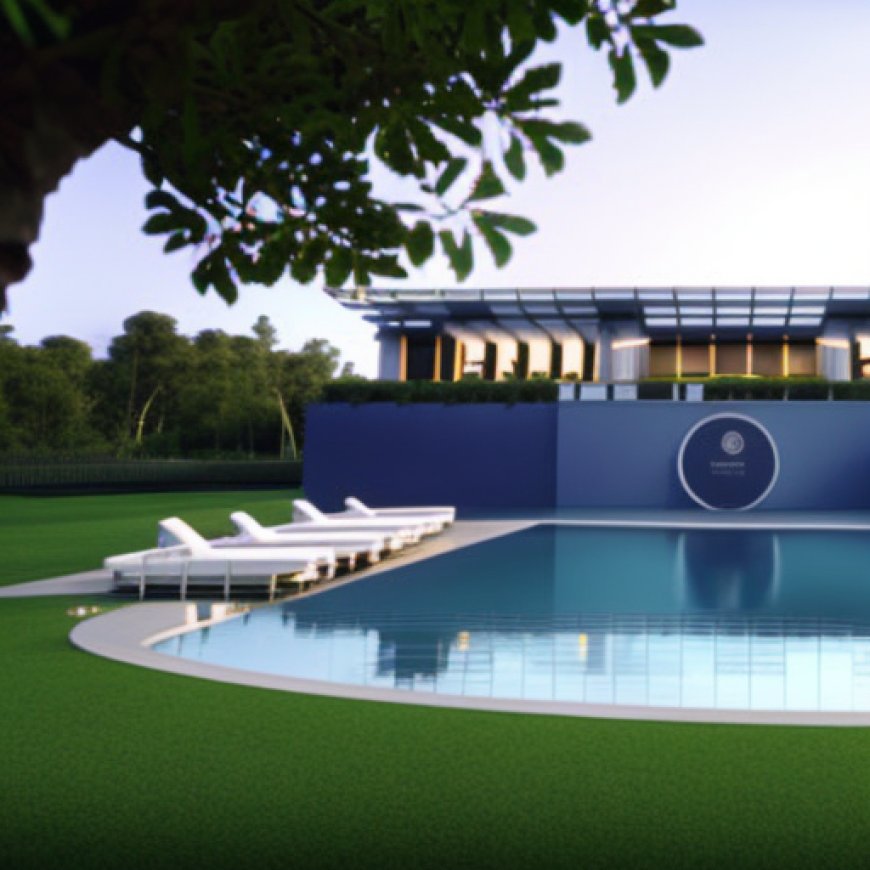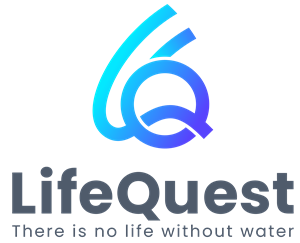Lifequest’s Wholly Owned Subsidiary Completes Installation of Its Flagship Biological Sewage Wastewater Treatment Plant With a 30m3/Day Capacity in a Resort in India


Lifequest World Corp.


RIDGEFIELD PARK, N.J., Oct. 03, 2024 (GLOBE NEWSWIRE) — LIFEQUEST WORLD CORP (OTC MARKETS: LQWC)
LIFEQUEST WORLD CORP is focused on innovative, decentralized, scalable wastewater treatment and reuse technologies. The company is focused on biological treatment of sewage wastewater and electro-chemical treatment of certain industrial wastewater.
Installation of Cutting-Edge Biological Sewage Wastewater Treatment Plant
Enes Kutluca, CEO of Lifequest subsidiary, Biopipe Global, announced the installation of their cutting-edge biological sewage wastewater treatment plant at a resort in a major tourist destination. This marks their third plant in a resort, with two plants already operating in the Maldives. The new plant will be commissioned upon the opening of the resort. This innovative on-site sewage treatment plant (STP) will significantly reduce the resort’s environmental footprint, contributing to water conservation efforts and ensuring the eco-friendliness of its operations. The installation of the Biopipe STP also ensures compliance with India’s increasingly stringent government regulations regarding wastewater management in hospitality settings.
Sustainable Development Goals (SDGs)
The hospitality industry in India is growing at a Compound Annual Growth Rate (CAGR) of 4.73% and is expected to reach $31 billion by 2029. With the surge in the number of resorts, particularly in popular travel destinations such as Goa, Kerala, Rajasthan, and Himachal Pradesh, it has become crucial for hospitality establishments to embrace sustainable practices, especially in waste management. Water conservation is a particular focus, and the Biopipe STP offers an ideal solution with its small footprint and limited civil work requirements. The effluent produced by the plant can be reused for irrigation, outdoor cleaning, and other non-potable uses, aligning with the Sustainable Development Goal of responsible consumption and production.
About LifeQuest & BioPipe
LifeQuest offers effluent treatment plants (ETP), sewage treatment plants (STP), fat oil and grease (FOG) separators, and hybrid media for water polishing. BioPipe, a subsidiary of LifeQuest, has developed a patented, sludge-free, chemical-free, odor-free, silent, easy to assemble and install, scalable, low-cost, ecological, and low-maintenance onsite sewage wastewater treatment system. The Abrimix ETP solution, available through their joint venture, is a highly efficient and cost-effective industrial wastewater treatment system that surpasses other onsite industrial wastewater treatment systems like Dissolved Air Floatation (DAF).
Contact: investor@lifequestcorp.com
Phone: 646-201-5242
This press release contains forward-looking statements that reflect the Company’s current beliefs, expectations, or intentions regarding future events. Any statements contained in this press release that are not statements of historical fact may be deemed forward-looking statements. All forward-looking statements involve significant risks and uncertainties that could cause actual results to differ materially from those expressed or implied in the forward-looking statements. The Company assumes no obligation, and specifically disclaims any intention or obligation, to update any forward-looking statements, whether as a result of new information, future events, or otherwise.
SDGs, Targets, and Indicators Analysis
1. Which SDGs are addressed or connected to the issues highlighted in the article?
- SDG 6: Clean Water and Sanitation
- SDG 9: Industry, Innovation, and Infrastructure
- SDG 12: Responsible Consumption and Production
- SDG 14: Life Below Water
The article discusses Lifequest World Corp’s focus on wastewater treatment and reuse technologies, which aligns with SDG 6’s goal of ensuring clean water and sanitation for all. The company’s innovative solutions also contribute to SDG 9 by promoting industry, innovation, and infrastructure. Additionally, the emphasis on water conservation and sustainable practices in waste management relates to SDG 12’s objective of responsible consumption and production. Finally, the mention of reusing effluent for non-potable uses highlights the connection to SDG 14, which aims to conserve and sustainably use the oceans, seas, and marine resources.
2. What specific targets under those SDGs can be identified based on the article’s content?
- SDG 6.3: By 2030, improve water quality by reducing pollution, eliminating dumping, and minimizing release of hazardous chemicals and materials.
- SDG 9.4: By 2030, upgrade infrastructure and retrofit industries to make them sustainable, with increased resource-use efficiency and greater adoption of clean and environmentally sound technologies and industrial processes.
- SDG 12.4: By 2020, achieve the environmentally sound management of chemicals and all wastes throughout their life cycle, in accordance with agreed international frameworks, and significantly reduce their release to air, water, and soil to minimize their adverse impacts on human health and the environment.
- SDG 14.1: By 2025, prevent and significantly reduce marine pollution of all kinds, in particular from land-based activities, including marine debris and nutrient pollution.
Based on the article, the targets mentioned above can be identified. The company’s wastewater treatment technologies contribute to improving water quality and reducing pollution (SDG 6.3). The focus on sustainable and environmentally sound technologies aligns with the target of upgrading infrastructure and industries to make them sustainable (SDG 9.4). The emphasis on waste management and reducing the release of hazardous materials supports the target of achieving environmentally sound management of chemicals and wastes (SDG 12.4). Lastly, the article mentions the reuse of effluent, which helps prevent marine pollution from land-based activities (SDG 14.1).
3. Are there any indicators mentioned or implied in the article that can be used to measure progress towards the identified targets?
- Reduction in pollution levels in treated wastewater
- Adoption of clean and environmentally sound technologies
- Reduction in the release of hazardous chemicals and materials
- Reduction in marine pollution from land-based activities
While the article does not explicitly mention specific indicators, the following indicators can be implied based on the identified targets. Monitoring the reduction in pollution levels in treated wastewater can measure progress towards SDG 6.3. The adoption of clean and environmentally sound technologies can be an indicator for SDG 9.4. Tracking the reduction in the release of hazardous chemicals and materials can measure progress towards SDG 12.4. Lastly, monitoring the reduction in marine pollution from land-based activities can indicate progress towards SDG 14.1.
4. SDGs, Targets, and Indicators Table
| SDGs | Targets | Indicators |
|---|---|---|
| SDG 6: Clean Water and Sanitation | 6.3: By 2030, improve water quality by reducing pollution, eliminating dumping, and minimizing release of hazardous chemicals and materials. | – Reduction in pollution levels in treated wastewater |
| SDG 9: Industry, Innovation, and Infrastructure | 9.4: By 2030, upgrade infrastructure and retrofit industries to make them sustainable, with increased resource-use efficiency and greater adoption of clean and environmentally sound technologies and industrial processes. | – Adoption of clean and environmentally sound technologies |
| SDG 12: Responsible Consumption and Production | 12.4: By 2020, achieve the environmentally sound management of chemicals and all wastes throughout their life cycle, in accordance with agreed international frameworks, and significantly reduce their release to air, water, and soil to minimize their adverse impacts on human health and the environment. | – Reduction in the release of hazardous chemicals and materials |
| SDG 14: Life Below Water | 14.1: By 2025, prevent and significantly reduce marine pollution of all kinds, in particular from land-based activities, including marine debris and nutrient pollution. | – Reduction in marine pollution from land-based activities |
Source: finance.yahoo.com








